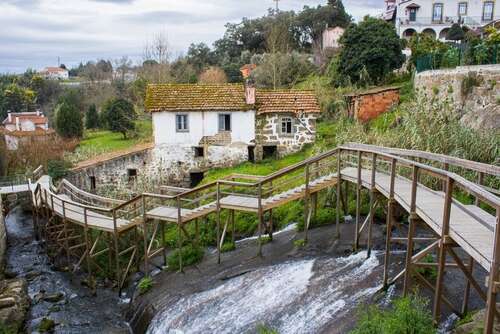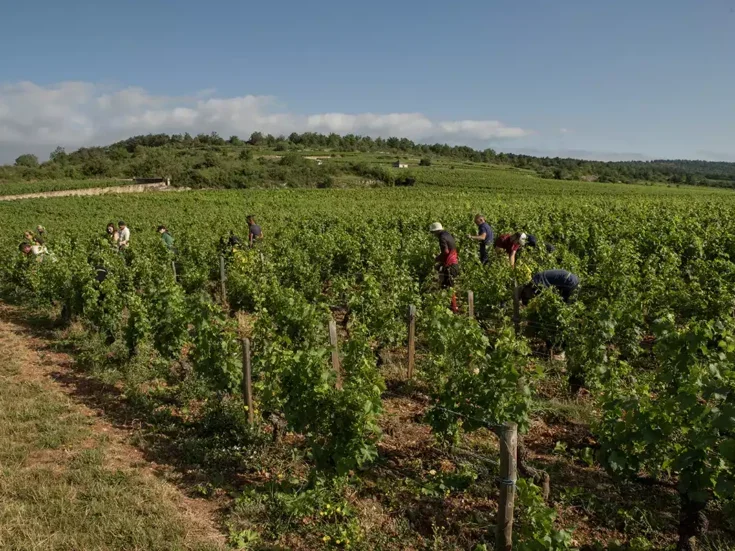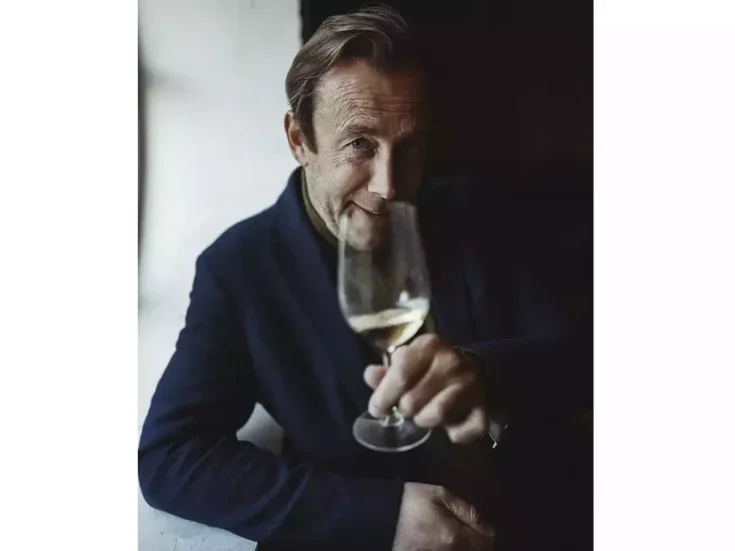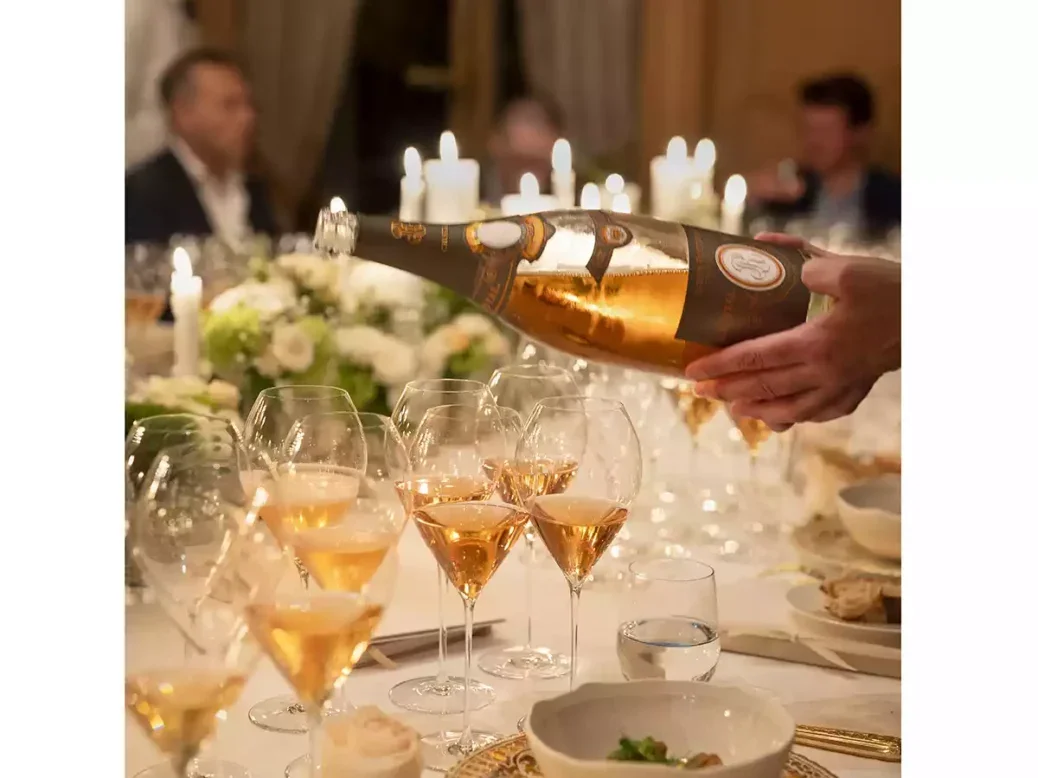
Sara Underdown charts the beautiful evolution of Cristal Rosé as a wine over time, punctuated with textural luxury and representing the culmination of a long and winding path to biodynamics, craftsmanship, and taste.
Tastings don’t come any rarer or grander than one I was fortunate enough to be invited to this year to celebrate the 50th anniversary of what is arguably Champagne’s most exclusive rosé: Cristal Rosé.
“This is an important and emotional moment for me,” said chef de cave Jean-Baptiste Lécaillon during our interview before the dinner at the Roederer family’s mansion in Reims. Lécaillon, who joined the family-owned Roederer Group in the early 1990s before taking over as chef de cave in 1999, is particularly passionate about Cristal Rosé. I’ve seen him consumed by a frustration for its perfection since meeting him in 2012.
As with most other things in life, the wine has evolved over its 50 years, but change has always been for the better. Lécaillon has been at the helm for most of this but has remained true to the founding vision of the wine as a more “amplified” version of Cristal Brut within a feather-light body.
A terroir-inspired rosé
Cristal Rosé came almost 100 years later than Cristal Brut, in 1974—a stroke of genius on the part of Jean-Claude Rouzaud, the maison’s modern-day patriarch, who had the good foresight to dedicate old-vine Pinot Noir from its finest sites for Cristal’s signature style.
Rouzaud had entered the business in 1967 after completing viticultural studies and convincing his mother’s side of the family, who owned Roederer, to give him a chance. They placed him alongside the veteran vineyard manager, where he stayed until taking over as winemaker in 1973. “I think it was the first time a chef de cave came from the vineyards,” says Lécaillon, reflecting on the early days of its creation. “I believe this is why Cristal Rosé is the first prestige cuvée that speaks loudly of returning to terroir.”
At a time when Champagne had become a product of the master blenders and marketing prowess, Rouzaud’s sensitivity to terroir inspired Cristal Rosé’s inaugural release, despite 1974 being a difficult year. His vision for Cristal Rosé as a “next level” Cristal required time on skin, rather than the far more usual addition of red wine to a white-wine blend. He separated the parts to enable skin contact, without fermentation, to obtain aromatic elements. Fermentation then elaborated a new level of aromas, which were complex and highly perfumed. “We are not in the business of winemaking; we are perfume-making!” says Lécaillon about the technique that is used for extraction.
He likens it to cold-brewing tea, which has become a recent fascination of Lécaillon’s, even inspiring him to travel to Japan to learn more from the nation’s top tea-masters. From this he hopes to deepen his understanding of the extraction process to reveal more delicate and precise aromas and texture. Exactly what will come of this, Lécaillon is still unsure, but it will likely evolve into another “chapter” in Cristal Rosé’s narrative, which takes its cue from terroir and the infusion concept.
Looking to the future
Black grape varieties play a critical role in elaborating any rosé Champagne, but especially Cristal Rosé. Rouzaud originally chose three plots of Pinot Noir, all from the Bonottes area in Aÿ. Today, they remain within the Cristal Rosé domaine, albeit within the cycle of renewal. Bonotte Pierre Robert, Gargeotte, and Côte du Moulin were the heirloom locations for fruit, coveted for producing exceptionally juicy Pinots with great perfume and vibrancy.
Hallowed ground in Aÿ, in Champagne’s historic cradle, is home to some of the finest grand cru sites, where some of the greatest Champagnes are birthed, including Dom Pérignon Rosé and Perrier-Jouët Belle Époque. The fabled wines from this area were once coveted by the kings of France and offer ripe fruit character and textured elegance, all within the finely chiseled framework of chalk terroir.
“We are lucky to have vineyards in Aÿ,” says Lécaillon “It’s a large area, but toward Mareuil-sur-Aÿ you have more clay, silex, and rock, so the wines are broad and strong. But toward Dizy, where we are, it’s super-chalky. It makes elegant wines that stay on the peachy and floral side in aroma.”
It is here in the land of Champagne’s giants that Louis Roederer marks its long-documented path to organics and the expression of style that has always taken its lead from chalk. One of the particularities of this part of Aÿ is that Pinot Noir is grown on what is essentially Chardonnay soil, which brings Cristal Rosé’s characteristic lightness, minerality, and soft deliciousness. It may be extraordinary to grow black-skinned grapes on such land, but this is Champagne, and Cristal is no ordinary wine.
In 1998, Lécaillon identified lieu-dit La Villers, also in this area, as a future Cristal Rosé site, replanting it with massal-selection material taken from Rouzaud’s historic plots. “We stick to the same plots, but we renew them, so that we have a choice,” says Lécaillon when I ask him about the future sourcing strategy for Pinot.
The appeal of La Villers is its higher altitude and midslope location, which brings a freshness that is highly desirable in warmer years. Since 2018, Cristal Rosé has been sourced from this plot—but in 20 years’ time, the original sites will be ready once again. “The plots are amazing, and for what we chose, in 1998, I was thinking about the future weather and what it would be like. We decided to go higher in the coteaux to have more freshness. When Bonotte Pierre Robert, Gargeotte, and Côte du Moulin come back, we will probably keep La Villers in the mix to have a choice, because we will need it,” says Lécaillon.
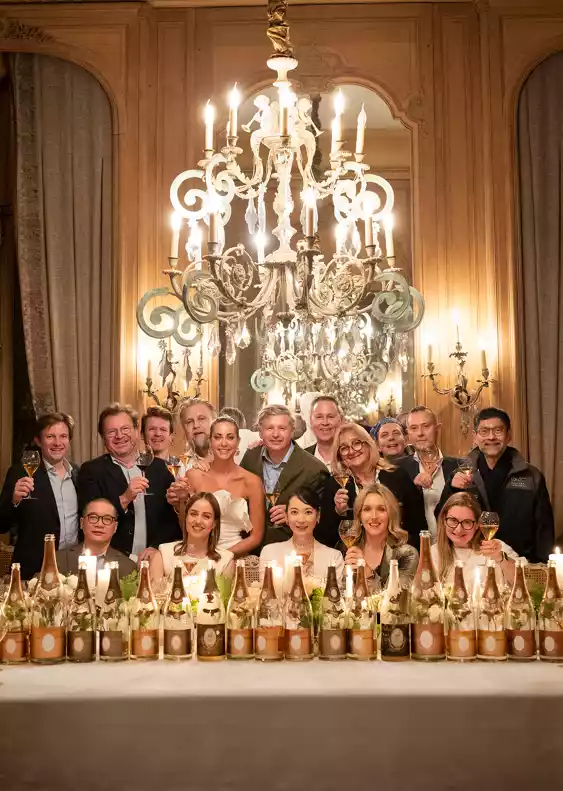
Perfume and blue-sky rarity
2007 was a significant chapter in the Cristal Rosé story. The vintage became Lécaillon’s first biodynamically farmed “baby,” which was also the first for a prestige cuvée Champagne. Under a biodynamic regime, such as the one used for Cristal Rosé, treatments ease vine vigor during periods of sunny weather to impart freshness. But in cooler years, organics is preferred, because biodynamics adds too much. In either case, they achieve a comfortable nexus between freshness from soil and roundness from sunshine.
On the Chardonnay side, there are two other parcels coming from the Côte des Blancs: Pierre Vaudon in Avize and Montmartin in Le Mesnil. Where Avize imparts power and a more Burgundian profile, the southeast-facing plot in Le Mesnil-sur-Oger stretches the palate toward a long, lacy, and salty finish. Today’s Pinot Noir from Aÿ makes up 55% of Cristal Rosé’s ultimate blend, with 45% coming from Chardonnay (divided equally between Avize and Le Mesnil).
2008 marked another chapter for Lécaillon. He made changes to the skin contact, moving from two or three days to between five and eight days, because longer infusion at a cooler temperature produces a more delicate profile and a perfection of aromas.
Infusion remains static; there’s no punch-down. After maceration, the Pinot Noir juice is racked off, and Chardonnay juice is then added to it before co-fermentation. The alcoholic fermentation never occurs with skin contact because of its effect on extracting flavor and structure. This way, the wine stays on the fresh and mineral side—a Champagne wine—rather than becoming a red wine.
Cristal Rosé isn’t made every year. Over the past 50, there have been only 25 releases, reinforcing its exclusivity. Those vintages were 1974, 1975, 1976, 1978, 1981, 1982, 1983, 1985, 1988, 1989, 1990, 1995, 1996, 1999, 2000, 2002, 2004, 2005, 2006, 2007, 2008, 2009, 2012, 2013, and 2014. When I asked Lécaillon what makes a Cristal Rosé year, he said it needs to be a year of perfumes. “I never know until it has infused,” he says. “I always say, with Cristal, it needs blue skies and no clouds. Cristal Rosé needs even more than this.”
The 50-year journey of Cristal Rosé has been one of craftsmanship and perfecting the idea of its unique concept around infusion. It has made for precious and rare wines, meticulously and lovingly made, which has elevated their status to mesospheric acclaim.
Tasting
2013 Cristal Rosé (magnum)
One of my favorite years, very classical in style. Lovely, delicate peach and rhubarb aromas. On the palate, creamy and concentrated, with a persistent, mineral finish. | 99
2012 Cristal Rosé (Jéroboam)
One of the greatest examples of Louis Roederer’s biodynamic advancements, representing a more amplified version of Cristal Rosé. It’s rich, fruity, zesty, and creamy, with some pie-crust secondary character and a touch of bitterness on the way to a long finish. | 98
2009 Cristal Rosé (Jéroboam)
From a warmer year where you can feel the ripeness of the Pinot Noir, this is a juicy wine, with no green elements. The infusion lasted for six to seven days, producing a beautiful dimension of soft extraction. | 97
2008 Cristal Rosé (magnum)
Slightly darker in color, with a deeper and more intense fruit character than the 2009. This is a scintillating and effortless Champagne, almost weightless, with noticeably higher acidity. A mouthwatering combination of delicious fruit and malic tension, long and intense on the back-palate, rounding out with soft, creamy notes. Superb. | 99
2004 Cristal Rosé Vinothèque (magnum) and original disgorgement (magnum?)
A “crazy” vintage, according to Jean-Baptiste Lécaillon. We compared this with an original disgorgement of the 2004 Cristal Rosé, which had a strong, savory character. The two, side by side, stimulated the most animated discussion of the night. The original disgorgement was significantly more amplified in its expression, and incredibly tasty. Vinothèque 98, original disgorgement | 99
2002 Cristal Rosé Vinothèque (magnum)
Fresh and chalky, more so than the 2004, revealing a red-fruit character that became more complex and smoky. Mouth-filling, with a weighty structure, this will unfurl in years to come. | 98
1996 Cristal Rosé Vinothèque (magnum)
Lécaillon’s first blend. As with all Champagnes from 1996, it has high acidity, even to this day. A major blunder for most houses was deciding picking dates based on analysis rather than on taste, leaving a feeling of imbalance. But this is a beautiful wine and shows no signs of that. It has moved into delicious umami territory, remaining silky, saline, and concentrated on the palate. | 98
1995 Cristal Rosé (magnum)
This also has sharp acidity and a concentrated palate, being really delicious now. | 96
1989 Cristal Rosé (magnum)
A truly great year for this cuvée. An outstanding Champagne that is quintessentially Cristal Rosé, with its extreme elegance. At this age, it feels complete. It’s full of youthful energy and finesse, at the same time deeply concentrated, harmoniously textured, and finely balanced. Perhaps the greatest Cristal Rosé I have tasted. | 99
1978 Cristal Rosé (Gravé)
Reduced effervescence, as you might expect, but loads of coffee and mocha, smoky reduction, and a pleasant, bitter finish. | 95
1976 Cristal Rosé
There’s life in the old dog yet! This was an extra-special treat, there being only 58 bottles left in Roederer’s cellars. Naturally, it is the most tertiary of the wines, with plenty of dried fruit, toast, and toffee character. More pétillant than effervescent at this age, but convincingly fresh, despite the lower-than-desirable acidity levels. | 95

